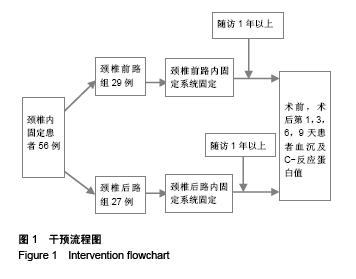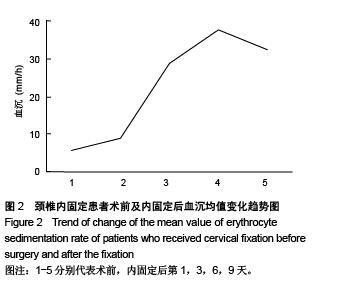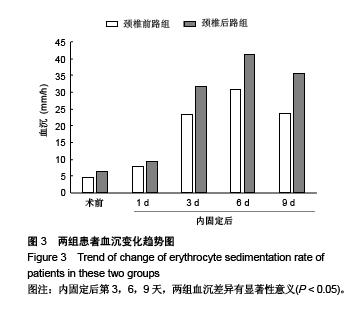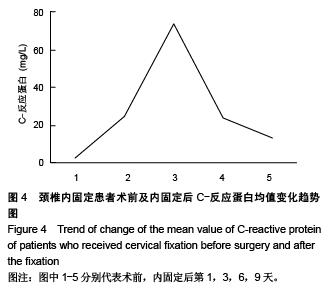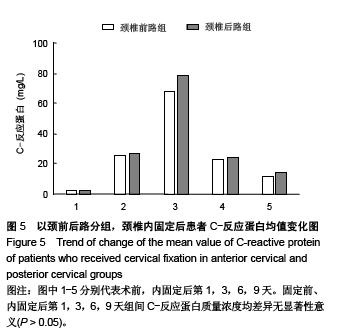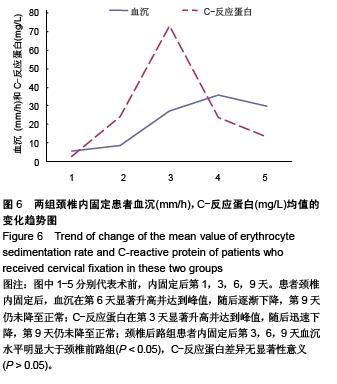| [1] Pull TGA, van Laarhoven CJ, Cohen DB. Incidence of surgical site infection following adult spinal deformity surgery: an analysis of patient risk. Eur Spine J. 2010;19(6):982-988.
[2] Pull TGA, Mohamed AS, Skolasky RL, et al. The presentation, incidence, etiology, and treatment of surgical site infections after spinal surgery. Spine (Phila Pa 1976). 2010;35(13):1323-1328.
[3] Hegde V, Meredith DS, Kepler CK, et al. Management of postoperative spinal infections. World J Orthop. 2012;3(11): 182-189.
[4] Gerometta A, Rodriguez OJ, Bitan F. Infections in spinal instrumentation. Int Orthop. 2012;36(2):457-464.
[5] Simchen E, Stein H, Sacks TG, et al. Multivariate analysis of determinants of postoperative wound infection in orthopaedic patients. J Hosp Infect. 1984;5(2):137-146.
[6] Whitehouse JD, Friedman ND, Kirkland KB, et al. The impact of surgical-site infections following orthopedic surgery at a community hospital and a university hospital: adverse quality of life, excess length of stay, and extra cost. Infect Control Hosp Epidemiol. 2002;23(4):183-189.
[7] Park KK, Kim TK, Chang CB, et al. Normative Temporal Values of CRP and ESP in Unilateral and Staged Bilateral TKA. Clin Orthop Relat Res. 2008;466(1):179-188.
[8] Piper KE, Fernandez-Sampedro M, Steckelberg KE, et al. C-reactive protein, erythrocyte sedimentation rate and orthopedic implant infection. PLoS One. 2010;5(2):e9358.
[9] Huang TJ, Hsu RW, Li YY, et al. Less systemic cytokine response in patients following microendoscopic versus open lumbar discectomy. J Orthop Res. 2005;23(2):406-411.
[10] Lee JH, Lee JH, Kim JB, et al. Normal range of the inflammation related laboratory findings and predictors of the postoperative infection in spinal posterior fusion surgery. Clin Orthop Surg. 2012;4(4):269-277.
[11] Choi MK, Kim SB, Kim KD, et al. Sequential changes of plasma c-reactive protein, erythrocyte sedimentation rate and white blood cell count in spine surgery: comparison between lumbar open discectomy and posterior lumbar interbody fusion. J Korean Neurosurg Soc. 2014;56(3):218-223.
[12] Houten JK, Tandon A. Comparison of postoperative values for C-reactive protein in minimally invasive and open lumbar spinal fusion surgery. Surg Neurol Int. 2011;2:94.
[13] Kraft CN, Kruger T, Westhoff J, et al. CRP and leukocyte-count after lumbar spine surgery: fusion vs. nucleotomy. Acta Orthop. 2011;82(4):489-493.
[14] Codine P, Barbotte E, Denis-Laroque F, et al. C-reactive protein, leukocyte count and D-dimer monitoring after orthopedic surgery: early diagnosis of infectious or thromboembolic complications. Part one: C-reactive protein and leukocyte count as an aid in diagnosing postoperative infection. Ann Readapt Med Phys. 2005;48(8):590-597.
[15] Neumaier M, Braun KF, Sandmann G, et al. C-Reactive Protein in Orthopaedic Surgery. Acta Chir Orthop Traumatol Cech. 2015;82(5):327-331.
[16] Mok JM, Pekmezci M, Piper SL, et al. Use of C-reactive protein after spinal surgery: comparison with erythrocyte sedimentation rate as predictor of early postoperative infectious complications. Spine (Phila Pa 1976). 2008;33(4): 415-421.
[17] Kong CG, Kim YY, Ahn CY, et al. Diagnostic usefulness of white blood cell and absolute neutrophil count for postoperative infection after anterior cervical discectomy and fusion using allograft and demineralized bone matrix. Asian Spine J. 2013;7(3):173-177.
[18] Davis N, Curry A, Gambhir AK, et al. Intraoperative bacterial contamination in operations for joint replacement. J Bone Joint Surg Br. 1999;81(5):886-889.
[19] Wimmer C, Gluch H, Franzreb M, et al. Predisposing factors for infection in spine surgery: a survey of 850 spinal procedures. J Spinal Disord. 1998;11(2):124-128.
[20] Weinstein MA, Mccabe JP, Cammisa FJ. Postoperative spinal wound infection: a review of 2,391 consecutive index procedures. J Spinal Disord. 2000;13(5):422-426.
[21] Olshaker JS, Jerrard DA. The erythrocyte sedimentation rate. J Emerg Med. 1997;15(6):869-874.
[22] Dupont C, Rodenbach J, Flachaire E. The value of C-reactive protein for postoperative monitoring of lower limb arthroplasty. Ann Readapt Med Phys. 2008;51(5):348-357.
[23] Lal SK, Jacob KC, Nagi ON, et al. Variations of some plasma components after closed fractures. J Trauma. 1976;16(3): 206-211.
[24] Sturdee SW, Giannoudis PV. C-reactive protein in patients who had operative fracture treatment. Clin Orthop Relat Res. 2004;(419):318-319.
[25] Dipaola CP, Saravanja DD, Boriani L, et al. Postoperative infection treatment score for the spine (PITSS): construction and validation of a predictive model to define need for single versus multiple irrigation and debridement for spinal surgical site infection. Spine J. 2012;12(3):218-230.
[26] Kuhn MG, Lenke LG, Bridwell KH, et al. The utility of erythrocyte sedimentation rate values and white blood cell counts after spinal deformity surgery in the early (≤3 months) post-operative period. J Child Orthop. 2012;6(1):61-67.
[27] Takahashi J, Ebara S, Kamimura M, et al. Early-phase enhanced inflammatory reaction after spinal instrumentation surgery. Spine (Phila Pa 1976). 2001;26(15):1698-1704.
[28] Kang BU, Lee SH, Ahn Y, et al. Surgical site infection in spinal surgery: detection and management based on serial C-reactive protein measurements. J Neurosurg Spine. 2010; 13(2):158-164.
[29] Lazennec JY, Fourniols E, Lenoir T, et al. Infections in the operated spine: update on risk management and therapeutic strategies. Orthop Traumatol Surg Res. 2011;97(6 Suppl): S107-S116.
[30] Chung YG, Won YS, Kwon YJ, et al. Comparison of Serum CRP and Procalcitonin in Patients after Spine Surgery. J Korean Neurosurg Soc. 2011;49(1):43-48. |
